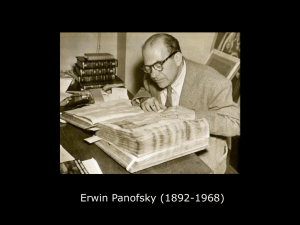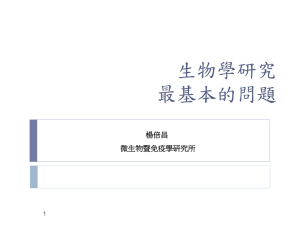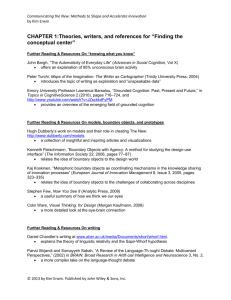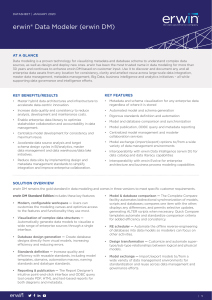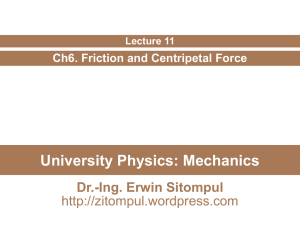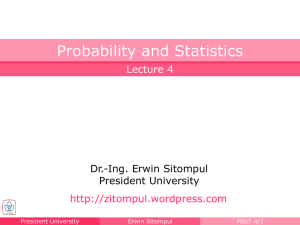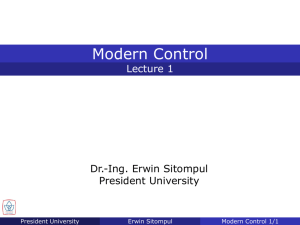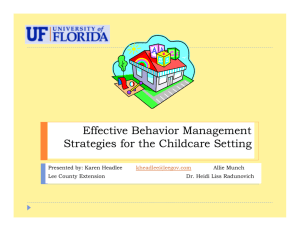Postmodern - MyLutherNet
advertisement
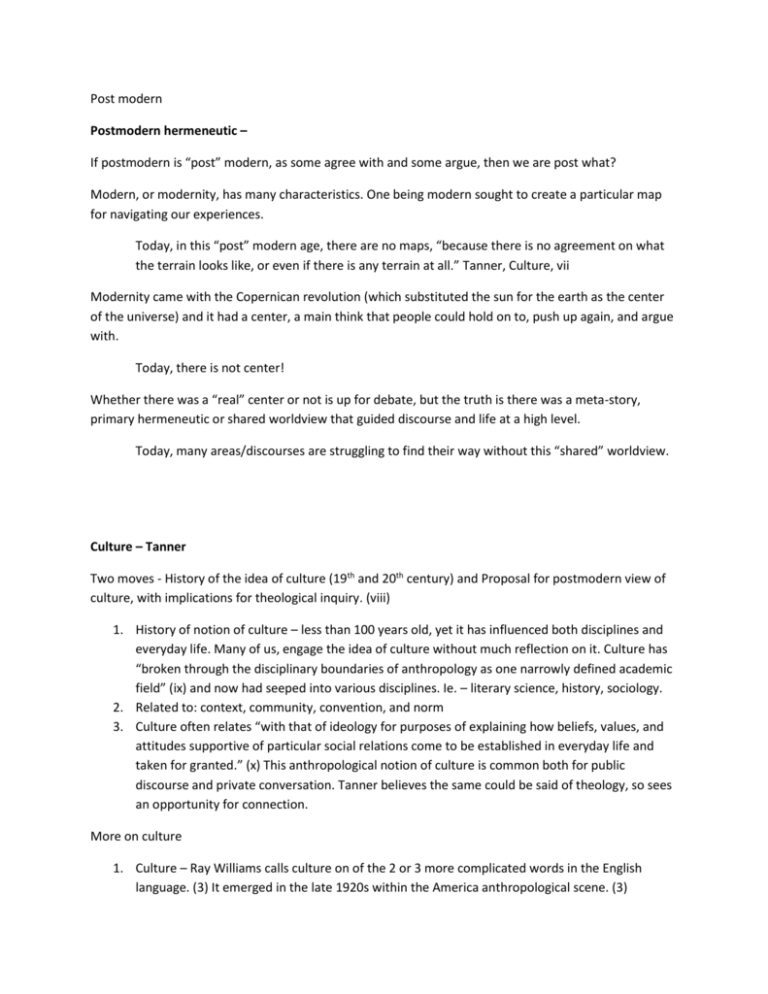
Post modern Postmodern hermeneutic – If postmodern is “post” modern, as some agree with and some argue, then we are post what? Modern, or modernity, has many characteristics. One being modern sought to create a particular map for navigating our experiences. Today, in this “post” modern age, there are no maps, “because there is no agreement on what the terrain looks like, or even if there is any terrain at all.” Tanner, Culture, vii Modernity came with the Copernican revolution (which substituted the sun for the earth as the center of the universe) and it had a center, a main think that people could hold on to, push up again, and argue with. Today, there is not center! Whether there was a “real” center or not is up for debate, but the truth is there was a meta-story, primary hermeneutic or shared worldview that guided discourse and life at a high level. Today, many areas/discourses are struggling to find their way without this “shared” worldview. Culture – Tanner Two moves - History of the idea of culture (19th and 20th century) and Proposal for postmodern view of culture, with implications for theological inquiry. (viii) 1. History of notion of culture – less than 100 years old, yet it has influenced both disciplines and everyday life. Many of us, engage the idea of culture without much reflection on it. Culture has “broken through the disciplinary boundaries of anthropology as one narrowly defined academic field” (ix) and now had seeped into various disciplines. Ie. – literary science, history, sociology. 2. Related to: context, community, convention, and norm 3. Culture often relates “with that of ideology for purposes of explaining how beliefs, values, and attitudes supportive of particular social relations come to be established in everyday life and taken for granted.” (x) This anthropological notion of culture is common both for public discourse and private conversation. Tanner believes the same could be said of theology, so sees an opportunity for connection. More on culture 1. Culture – Ray Williams calls culture on of the 2 or 3 more complicated words in the English language. (3) It emerged in the late 1920s within the America anthropological scene. (3) 2. Word is not new – linguistic roots – Latin – and had to do with the care and tending of crops or animals (3) and the idea that human societies have different customs and practices is not new. What is new is the “association of this idea of different ways of living with the word culture.”(3) “The word culture comes from the Latin cultura or culturus, meaning ‘cultivation or the state of being cultivated.” (Erwin, 16) This idea of culture related to the process or cultivation of the person into a more mature, sophisticated person. Tied to this notion is education and knowledge. “For early Germans kultur meant the cultivation (nurture or development) of a ‘complex inner life’ – a life of knowledge in the arts and philosophy.” (Erwin, 16) This understanding is what came to be seen as high culture. Both stress the notion of activity and dynasism. It’s not static, but a changing essence. According to Pamela Erwin, “culture is a broad, constantly changing flow of social influences. The more complex a society becomes, the greater the complexity of these social influences and the greater the pace of change.” (Erwin, 16) 3. First definition – E. B. Taylor – (1870) Culture is ”that complex whole which includes knowledge, belief, art, morals, law, custom, and any other capacities and habits acquired by man as a member of society.” (Erwin, 17) His definition, while disputed in its content, is attributed as the first anthrological one and is similar to civilization. In 1989, Ward Goodenough, identified 7 senses which interplay to make up culture. 1. Systems of standards, 2. Assigned Characteristic traits, 3. Operating culture, 4. Public culture, 5. a set of Public Culture, 6. Society’s Culture and 7. Culture Pool. (Erwin, 17-25) a. Systems of Standards – system that frames a person’s expectations (for perceiving, believing, evaluating and performing). This connects with one’s dress, actions, and expectations. (18) b. Assigned Character Traits – specific attributes based on one’s experience with a member of such a group. (I.e. experience with a person – from the South or from MN) (18) Two key things are connected to this one - Generalizations and in contrast to one’s own. (19) c. Operating Culture – standards that society chooses to judge behavior. This may be conscious or unconscious. (19) d. Public Culture – specific forms of thoughts and actions that are expected in public arenas. (20) Publics not only judge but seek to promote certain behaviors. (22) Elijah Anderson describes this as “codes” and differing contexts use different codes. And people living in different “publics” learn to switch codes. (21) e. A set of Public Cultures – many public cultures function alongside each other. Each “public” is a subculture. (23) “The idea here is that people within a society have access to a variety of public cultures (subcultures) that provide the same functions – limiting and promoting ideas, behaviors, and actions.” (23) f. Society’s Culture – Culture (capitalized) refers to the totality of all cultures within a society, both the public and subcultures. (25) g. Culture Pool – all the possibilities – past, present and future – of culture. Humans always operate with a backdrop of culture, the present of culture and future options. (25) 4. What is Culture? Seven ideas from Erwin – a. About the human potential for ideas – “to construct a thought, opinion, or belief” is only left to human capacity. (27-28) b. About people assigning meaning – more related to values and purpose. (28) c. About socially consistent patterns of behavior – a way of life or lifestyle (28) d. Is a historical phenomenon (tradition) – the patterns of life show meaning and help see patterns/customs over time! (29) e. Is creativity – people are active in creating culture. They are managing their meaning from where they are within culture. (30) f. About solving problems – allow for groups of people to exercise control over one’s environment. (30) g. A guidance system – as a system of values, meanings and beliefs to regulate behaviors, individually and communally. It “sets the norm” of a society. (32) 5. Culture is expresses in a group of people’s signs, symbols, rituals, and language. (Erwin 35-50) 6. Attributed to this modern sense of culture is difference. Culture seeks to explain the difference among peoples and their ongoing life, as human beings, in a group and maintained over generations. (4) It has to do with the social behavior. “Differences in forms of human life therefore reflect nothing more than the distinct histories of bounded groups of people.”
